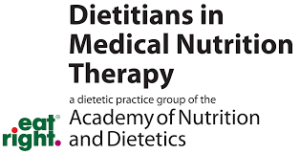What is iron?
Iron is vital for our bodies. It helps us grow, develop our brains, keep our hormones in check, and lets our cells do their jobs. Plus, it’s a key part of our red blood cells, which carry oxygen to our muscles and tissues. It is important to maintain healthy iron levels, especially while taking care of a gastrointestinal (GI or digestive) disease, to help support your quality of life.
What is iron deficiency anemia?
Iron deficiency is when our bodies do not have enough iron. It’s very common all around the world, even in developed countries.
Among patients with GI diseases, not having enough iron is the main reason you get anemia, which is when you don’t have enough healthy red blood cells. That is why it’s important for people with conditions like celiac disease, eosinophilic esophagitis (EoE), and inflammatory bowel disease (IBD, Crohn’s disease or ulcerative colitis) to keep an eye on their iron levels even in IBD remission.
Including iron in your diet
Having a GI disease raises your chance of getting anemia no matter what you eat. Eating foods rich in iron might not be enough to fix or completely stop iron-deficiency anemia, but it does help. Iron-rich foods along with supplementation can help you keep healthy iron levels. When you eat plant-based iron, it’s best to have it with foods that have vitamin C to help our bodies use the iron. If your health care provider says it’s okay, it’s a good idea to include foods with fiber in your diet.
-
Animal sources of iron
- Meat: beef, pork, lamb
- Poultry: turkey, chicken
- Seafood: fish, shrimp, clams, mussels, oysters
-
Plant sources of iron
- Spinach, kale, arugula
- Nuts/nut-butters; seed/seed-butters; tofu, tempeh
- Beans, fortified grain, hummus, lentil soups
- Fortified whole grains (oats, rice, breads, cereals, millet)
-
Vitamin C-rich foods
- Cantaloupe
- Peppers
- Citrus (kumquat, grapefruit, lemon, orange/clementine/tangerine, lime)
- Kiwi
- Broccoli, cabbage, spinach, green peas
- Tomato
- Strawberries
Iron inhibitors
Some foods, like calcium supplements and calcium-containing foods (fortified plant milks, juices, and dairy) make it harder for our bodies to absorb iron. Even though these foods are healthy and should still be part of our diet, it’s a good idea to eat them separately from foods that are high in iron if you’re trying to make sure your body absorbs as much iron as possible.
Treating iron deficiency anemia
To help your body better absorb iron from iron pills, it’s best to try taking them on an empty stomach or with something slightly acidic, like a glass of orange juice. If this is hurting your stomach, you can try taking the iron with food. To help your body absorb the iron, take it every other day (for example, Monday, Wednesday, Friday, Sunday, Tuesday, Thursday, Saturday and so on).
Taking iron pills might not work well if you have inflammation (swelling) in your gut and can even make your stomach feel worse, so your health care provider might suggest you take iron through a vein (IV) if you have anemia caused by not having enough iron, especially if you have active IBD. It’s important to get iron treatment at the same time as treatment for IBD, without waiting for IBD to get better on its own. Hematologists, who are doctors that specialize in blood problems, can help set up IV iron treatment if your GI doctor thinks it’s a good idea for you.
How to know if it's working
After you start getting enough iron, your hemoglobin levels, which show how much oxygen-carrying protein is in your blood, should go up within 4 to 8 weeks. If they don’t, your doctor might need to change your treatment, like switching from iron pills to IV iron. You might also need to talk to a hematologist about why the iron treatment isn’t working. Depending on how serious the iron problem is and what is causing it, it might take up to 3 months or even longer for your hemoglobin levels to return to normal and for your body’s iron stores to fill up again.
Written by

Stacey Collins, MA, RDN/LD
Reviewed by DIGID Inflammatory Bowel Diseases workgroup ©2024

Stacey Collins, MA, RDN/LD
Reviewed by DIGID Inflammatory Bowel Diseases workgroup ©2024


